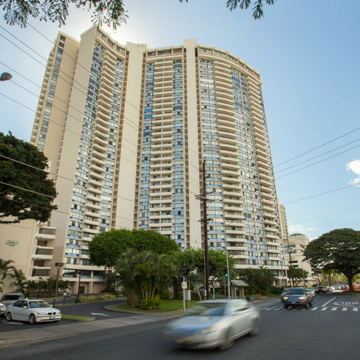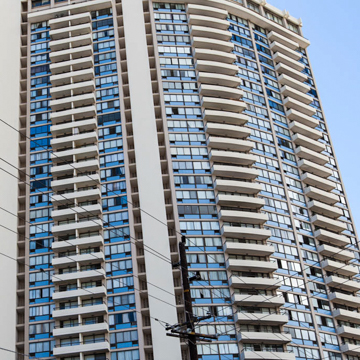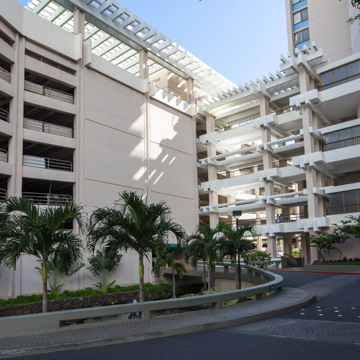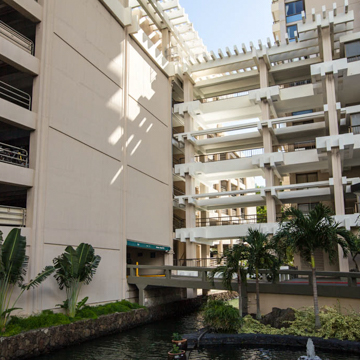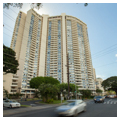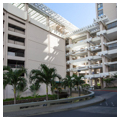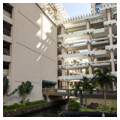If the Marco Polo were in Brazil, it would be said to have a samba curve, but as it is in Hawaii, it has a “hula shape.” Adapting the sinuous, rippling curves of Oscar Niemeyer's Dance Hall at Pampulha to a high-rise building, the architects developed an appealing thirty-six-story building with 573 units. Developer-owners Reed and Lloyd Martin, who were the builders of the Hawaii State Capitol (OA46), directed the architects to design the nicest, biggest condominium in town, and they wanted rounded shapes rather than a rectilinear box. Popular in Brazil, these curving forms found few imitators in Hawaii.
You are here
Marco Polo
1971, Charles “Ty” Sutton and Lemmon, Freeth, Haines, Jones and Farrell. 2333 Kapiolani Blvd.
If SAH Archipedia has been useful to you, please consider supporting it.
SAH Archipedia tells the story of the United States through its buildings, landscapes, and cities. This freely available resource empowers the public with authoritative knowledge that deepens their understanding and appreciation of the built environment. But the Society of Architectural Historians, which created SAH Archipedia with University of Virginia Press, needs your support to maintain the high-caliber research, writing, photography, cartography, editing, design, and programming that make SAH Archipedia a trusted online resource available to all who value the history of place, heritage tourism, and learning.









